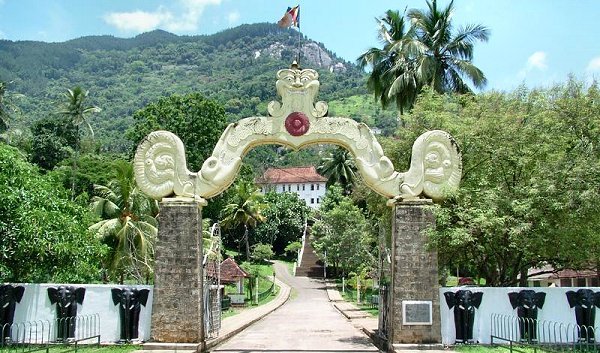Mathale
Matahale

Aluvihara Temple (Luminous Cave)
The history of Aluvihare Rock Temple is traced back to the 3rd Century B.C to the reign of King Devanampiyatissa. It is believed that the King built the dagoba, planted the Bo sapling and founded the temple after the introduction of Buddhism to the country during his reign. If you move of Kandy to Dambulla, stop in Matale. You will certainly be rewarded for.Aluvihara; Luminous Cave Temple is synonymous with the teaching of the Buddha. Aluvihara rightly assumes its significance in the annals of the history of world Buddhism. Aluvihare is the place where the Oral teachings of Buddhism, Tripitaka were written into pali on palm leaves. There is a relish story behind the origin of the temple. Especially the cave dedicated to Ven. Buddhagosa thero was used to translate the documentaries and Buddhist teachings. Tripitakaya is divided into three parts. They are vinaya pitakaya, sutra pitakaya, and Abhidharma pitakaya. Gradually the Tripitaka teachings were shared by mere word of mouth by entrusting to memory by the Buddhist monks. So they had to be ensured unless the marvelous tourism destinations would have vanished. It is believed that the documentary process was carried by the King Walagamaba during his reign.
The Aluvihare Rock Temple is a sacred Buddhist temple located in Aluvihare, Matale District of Sri Lanka. Surrounded by hills, the Aluvihara cave temple is situated 30 km north of Kandy on the Matale-Dambulla road. The name Aluvihara has many meanings and legends associated with it. It was originally known as ‘Alu-Lena’ or ‘Aloka-Lena’ (Luminous Cave) based on a legend. Legend has it that a giant used three of the rocks as a base for his cooking pot and the name Aluvihara (Ash Monastery) refers to the ashes from the cooking fire. The cave temple faced east and it received the morning rays of sunrise. This was the reason the cave was named Aloka-Lena (luminous cave) since ancient times.More or less next to the rock cut Temple is a “Golden” pagoda. Look to the hillside above you and you’ll see a huge seated golden Buddha offering protection and blessings with an abhaya (palm facing-outward) gesture. Quite surprising was the temple complex itself. It consists of several temples on different levels on the mountain. Steps connect the temples with each other. The first two caves contain 10m reclining Buddhas and impressive lotus-pattern murals on the ceilings.
Things to do in Mathale:
Spice Garden
Visit a spice garden in Matale to see different spices for which Sri Lanka is famous. Clients will be able to see different spices and how some of these spices are grown and processed. Learn about the local plants, their culinary and medicinal uses from your guide as you go. Witness a Cookery demonstration that puts the plants to good use and enjoy a lunch experience made with fresh spices. This culinary tour is an ideal way for the discerning traveler to immerse him or herself in the history and the ethos of Sri Lanka, its people and their customs and, most importantly, their food! You can learn about Sri Lankan spices and various Sri Lankan cookery methods.
There are a number of magnificent frescoes. The second cave is filled with cartoon-like murals of the realms of hell to keep potential sinners on the straight and narrow. Intriguing, because they are hell for on the various deadly sins that man can commit (including adultery, lie and lust) are various punishments, which are very informative. Complete with demons and hell fire. If you move of Kandy to Dambulla, stop in Matale. You will certainly be rewarded for.
